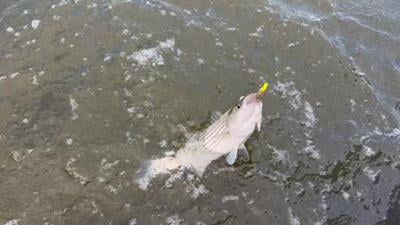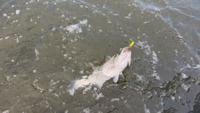CHESAPEAKE BAY - The Chesapeake Bay's striped bass population continues to show concerning trends, with the Maryland Department of Natural Resources (DNR) reporting a sixth consecutive year of below-average numbers. The findings were discussed this week by the Atlantic States Marine Fisheries Commission (ASMFC), a multi-state agency that may soon implement stricter fishing regulations in response.
“Although the restrictions that have been put in place over the last couple of year seem to have gotten the fishing mortality back on track, we are still at a low level of fish that is unsustainable,” said the Chesapeake Bay Foundation’s executive director.
For those whose livelihoods depend on striped bass, these measures have had serious economic impacts. Charter boat captain John Motovidlak said that restrictions implemented last season hurt his business.
“This summer, our charters—everybody's charters—were off at least 40-50%,” said Motovidlak.
Further restrictions could be on the horizon, which worries many in the fishing industry. “I don't know what else they can do to us...let's face it, they cut us back to one fish, a slot limit of 19 to 24 inches. The only thing they can do is take more days away from us,” Motovidlak said.
Motovidlak fears a potential moratorium, as well, saying, “Oh, it would be devastating to us. It’s the only income I got. I've been doing it since 1972.”
Allison Colden, executive director of the Chesapeake Bay Foundation, emphasized that no option is off the table when it comes to the future of the striped bass population.
“Although we understand this represents some significant challenges to those who make their livelihoods from fishing for striped bass...we all know that this additional action is likely necessary to ensure that we have a striped bass population for future generations,” Colden said.
The ASMFC has scheduled another meeting in December to assess potential further restrictions and conservation efforts.





